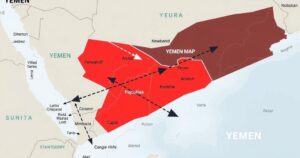Mitigating Earthquake Risks: Essential Strategies for Preparedness and Protection

This article addresses the increasing frequency and severity of earthquakes worldwide, highlighting significant financial losses from recent seismic events. It underscores the unpredictability of earthquakes and outlines methods for organizations to assess their earthquake risk, primarily through the use of catastrophe modeling tools. The article further discusses appropriate risk mitigation strategies, including retrofitting vulnerable structures and utilizing various insurance products, including parametric coverage, to ensure rapid recovery post-event. The emphasis is placed on the need for tailored strategies based on individual organizational needs to effectively manage earthquake-related risks.
Earthquakes are more frequent than many people realize, with over 50 significant seismic events recorded globally in 2023 alone. The consequences of such events can be severe, as seen with the Noto earthquake in Japan, which resulted in estimated economic losses of $17.6 billion. Additional incidents occurred in places like Taiwan, Turkey, and Brazil, underscoring the peril these natural disasters pose. An earthquake occurs due to the sudden release of energy between two tectonic plates, resulting in ground shaking. Although there are typically around 15 major earthquakes annually, predicting their precise timing or location remains incalculable. The severity of an earthquake is assessed through metrics such as Moment Magnitude (Mw), which gauges total energy released, and Modified Mercalli Intensity (MMI), which reflects shaking intensity influenced by local geological conditions. Organizations located in earthquake-prone areas must actively assess potential damage to their infrastructures. One approach involves analyzing seismic historical records to identify regions with varied risk levels. However, the scope of this analysis might be limited by the typical availability of records, which often extends back only about a century. Utilizing catastrophe modeling tools represents a more advanced methodology for assessing earthquake-related risks. By integrating contemporary geological data and scientific insights, these models provide organizations with estimates of financial losses sustained from hypothetical seismic occurrences. The accuracy of such models heavily relies on the quality of data incorporated, including specifics regarding local geology and building vulnerabilities. The repercussions of earthquake impacts can reverberate beyond immediate physical damage; disruptions can extend into various sectors. For example, the 2011 earthquake and resultant tsunami in Japan led to substantial declines in automobile industry capacities due to supply chain interruptions—reaffirming the need for thorough risk assessment and mitigation strategies. The damage caused by earthquakes of similar magnitudes can differ dramatically based on geographic factors. Thus, it is imperative for organizations to seek expertise in risk mitigation and insurance options. Once a detailed understanding of risks is formed, organizations can strategically determine the most advantageous measures to adopt. For instance, in one scenario, a real estate investment company identified that a minority of buildings constituted the majority of its earthquake risk. By retrofitting particularly vulnerable structures, the company aimed to significantly reduce potential financial losses. Additionally, various insurance products are available to safeguard against earthquake risks, including both traditional policies and parametric insurance. The latter provides a fixed payout contingent upon predetermined earthquake criteria being met, offering quicker claims processing and clarity of compensation amounts. Organizations must structure their insurance policies carefully to ensure coverage of various risks and facilitate rapid financial recovery following an earthquake. Each risk management strategy should be tailored according to individual organizational needs and exposures. In conclusion, it is critical for organizations exposed to seismic risks to conduct thorough assessments to inform their response strategies. By leveraging advanced catastrophe modeling, engaging expert consultations, and employing appropriate insurance mechanisms, organizations can enhance their resilience against the potentially devastating impacts of earthquakes. WTW is dedicated to assisting with effective risk management solutions to mitigate these challenges.
Earthquakes represent a significant natural disaster risk, frequently occurring in various parts of the world and often leading to substantial economic and humanitarian consequences. The article discusses the necessity for organizations in earthquake-prone areas to proactively prepare for potential seismic events. It emphasizes the unpredictability of earthquakes and the importance of understanding risk exposures. By using modern catastrophe modeling, organizations can better assess vulnerabilities in their buildings and infrastructures, allowing them to implement effective risk management strategies and insurance solutions. This proactive approach can protect assets and minimize financial losses following an earthquake.
The importance of earthquake preparedness cannot be overstated. By understanding seismic risks and employing modern assessment tools, organizations can identify vulnerabilities, implement necessary safety measures, and select appropriate insurance coverage. This strategic approach equips them to mitigate the far-reaching impacts of earthquakes on their operations and maintain business continuity in the event of a disaster. WTW’s commitment to providing comprehensive risk management solutions reaffirms the necessity of preparedness in the face of natural catastrophes.
Original Source: www.wtwco.com








